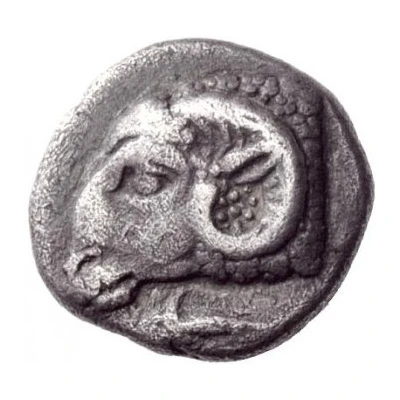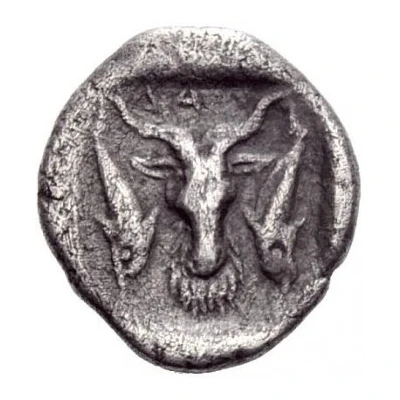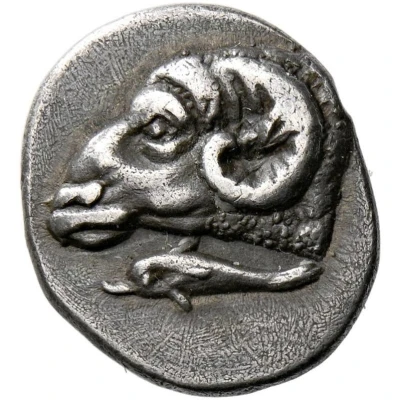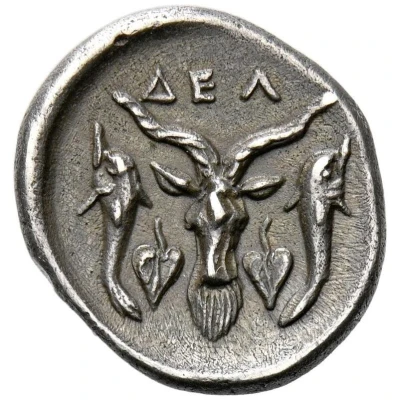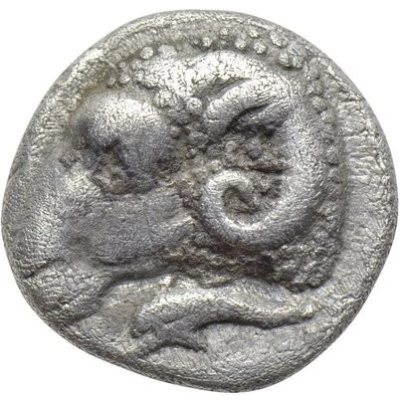
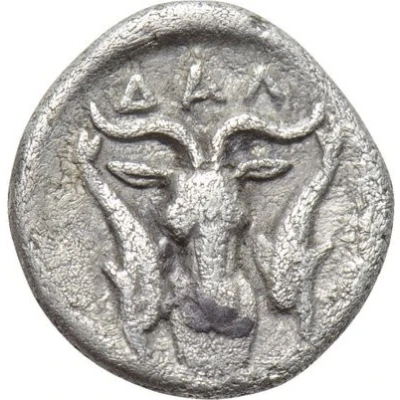

© Numismatik Naumann GmbH
Trihemiobol 400 BC - 380 BC
| Silver | 1.2 g | 11 mm |
| Issuer | Delphi (Phokis) |
|---|---|
| Type | Standard circulation coin |
| Years | 400 BC - 380 BC |
| Value | Trihemiobol (¼) |
| Currency | Drachm |
| Composition | Silver |
| Weight | 1.2 g |
| Diameter | 11 mm |
| Shape | Round (irregular) |
| Technique | Hammered, Incuse |
| Demonetized | Yes |
| Updated | 2024-10-10 |
| Numista | N#284585 |
|---|---|
| Rarity index | 100% |
Reverse
Head of goat facing; dolphins swimming downwards left and right; all within incuse circle.
Script: Greek
Lettering: ΔAΛ
Interesting fact
The Trihemiobol coin was used in ancient Greece during the 4th century BC, specifically in the city of Delphi. It was made of silver and weighed 1.2 grams. Despite its small size, it was an important coin in the ancient Greek economy, as it was used for everyday transactions and was also used as a form of payment for workers and merchants. Additionally, the coin features an image of the Greek god Apollo, who was revered as a symbol of wisdom, music, and prophecy, making it a unique and valuable piece of history.
